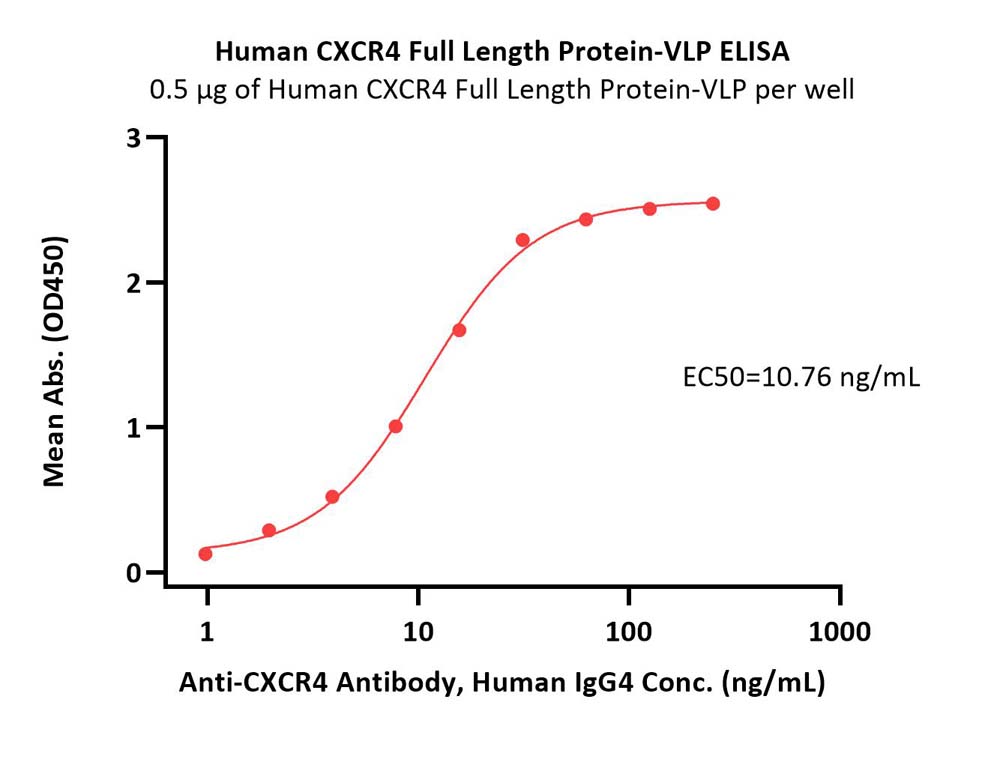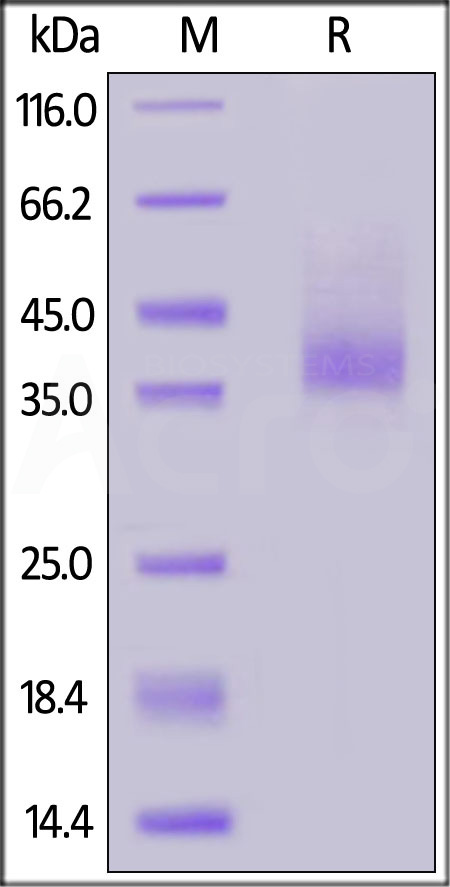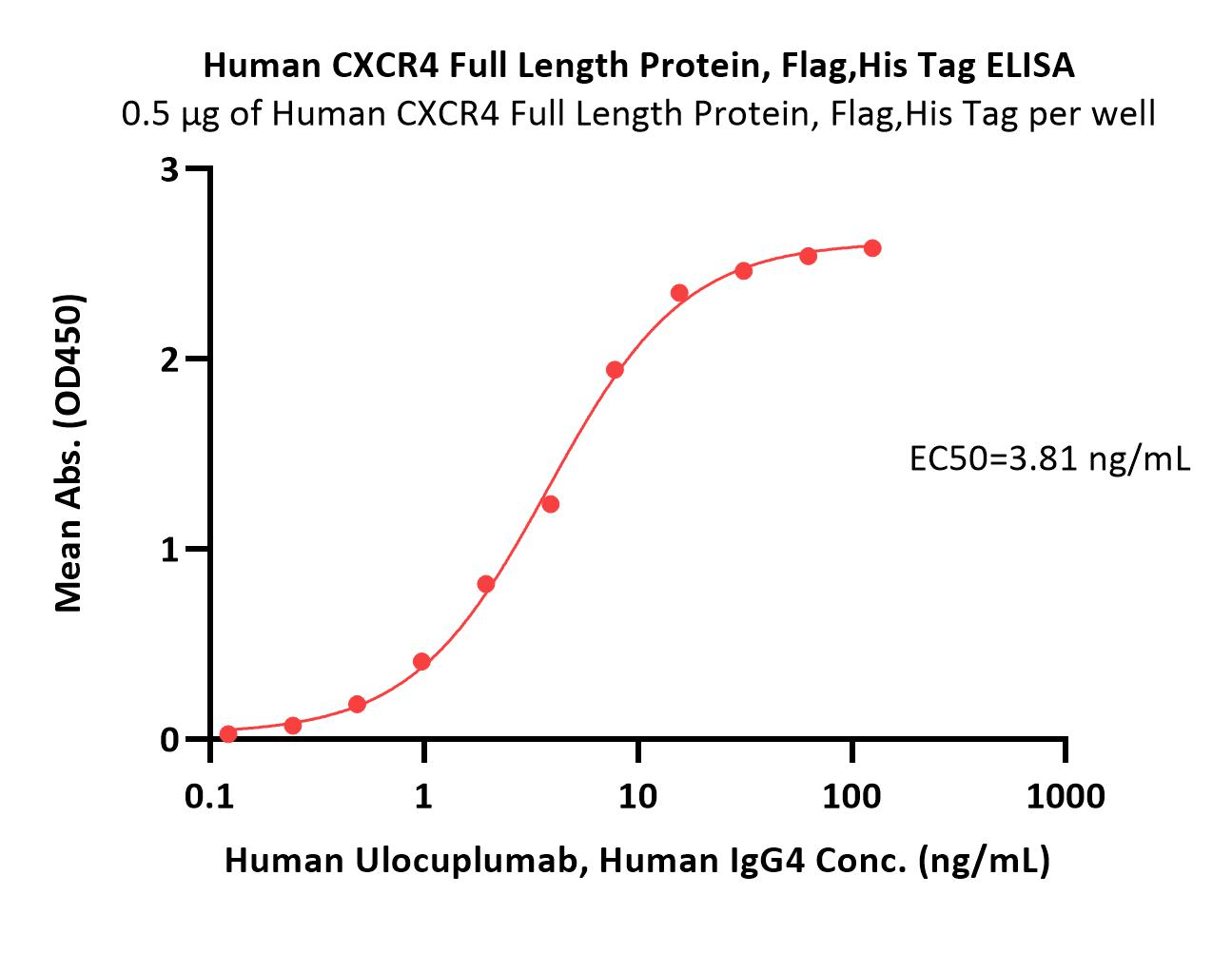CXCR4分子别名
CXCR4,CD184,Fusin,D2S201E,FB22,HM89,HSY3RR,LAP3,LCR1,LESTR,NPY3R,NPYR,NPYRL,NPYY3R,WHIM
CXCR4分子背景
C-X-C chemokine receptor type 4 is also known as fusin or CD184 (cluster of differentiation 184), CXCR4, CD184, D2S201E, FB22, HM89, HSY3RR, LAP3, LCR1, LESTR, NPY3R, NPYR, NPYRL, NPYY3R or WHIM. CXCR-4 is an alpha-chemokine receptor specific for stromal-derived-factor-1 (SDF-1 also called CXCL12), a molecule endowed with potent chemotactic activity for lymphocytes. This receptor is one of several chemokine receptors that HIV isolates can use to infect CD4+ T cells. HIV isolates that use CXCR4 are traditionally known as T-cell tropic isolates. Typically, these viruses are found late in infection. It is unclear as to whether the emergence of CXCR4 using HIV is a consequence or a cause of immunodeficiency.CXCR4 is upregulated during the implantation window in natural and hormone replacement therapy cycles in the endometrium, producing, in presence of a human blastocyst, a surface polarization of the CXCR4 receptors suggesting that this receptor is implicated in the adhesion phase of human implantation. SDF-1 and CXCR4 were believed to be a relatively "monogamous" ligand-receptor pair (other chemokines tend to use several different chemokine receptors in a fairly "promiscuous" manner). Recent evidence demonstrates ubiquitin is also a natural ligand of CXCR4. Chronic exposure to THC increased T lymphocyte CXCR4 expression on both CD4+ and CD8+ T lymphocytes. Drugs that block the CXCR4 receptor appear to be capable of "mobilizing" hematopoietic stem cells into the bloodstream as peripheral blood stem cells.






















 Star Ribbon预染蛋白Marker蛋白质标记物是生物研究和药物开发的重要组成部分。无论是用于蛋白质电泳还是western blot,我们的预染色蛋白质标记物帮助您快速确定目标蛋白质的分子量或评估转移效率。Fc受体蛋白治疗性抗体的功效取决于Fab片段及其对目标抗原的结合活性,还取决于Fc片段及其与关键Fc受体的相互作用。因此,在抗体工程中候选物必须针对一系列受体进行测试。探索我们的重组Fc受体蛋白质的全面收藏!
Star Ribbon预染蛋白Marker蛋白质标记物是生物研究和药物开发的重要组成部分。无论是用于蛋白质电泳还是western blot,我们的预染色蛋白质标记物帮助您快速确定目标蛋白质的分子量或评估转移效率。Fc受体蛋白治疗性抗体的功效取决于Fab片段及其对目标抗原的结合活性,还取决于Fc片段及其与关键Fc受体的相互作用。因此,在抗体工程中候选物必须针对一系列受体进行测试。探索我们的重组Fc受体蛋白质的全面收藏!































 膜杰作
膜杰作 Star Staining
Star Staining




















